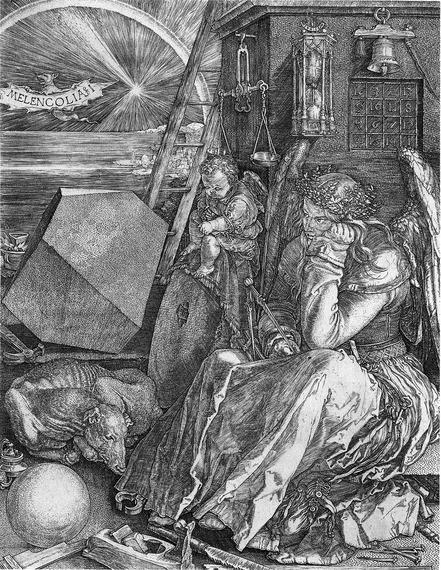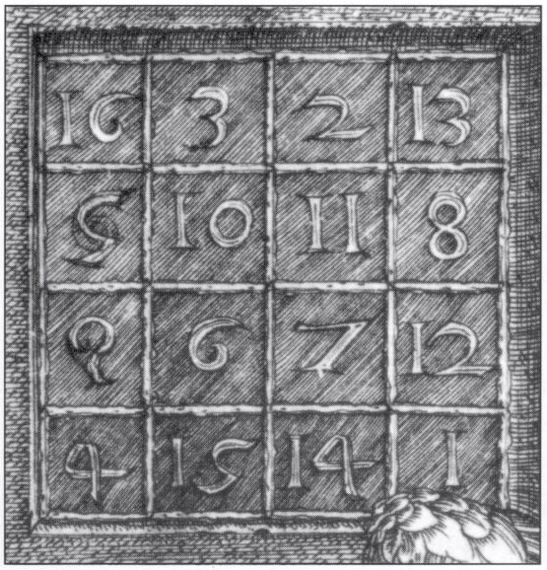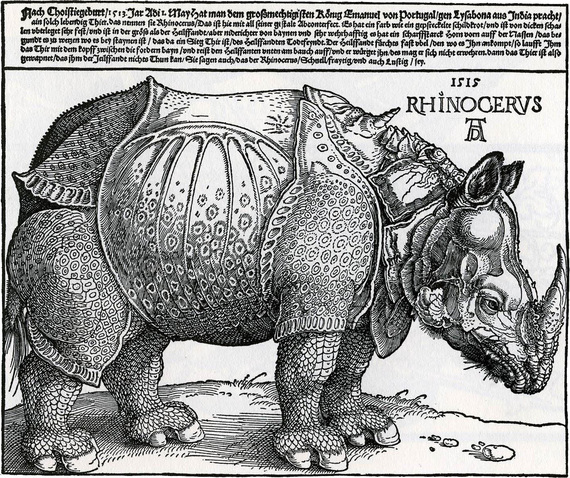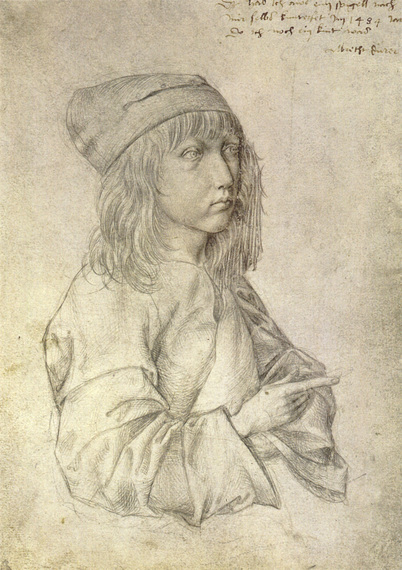Art and technology are cautious dance partners. Starting with cave painting, every means of expression beyond the voice and log drum required the development of a medium for its embodiment. This desire for expression is the essence of art, and drives artists to explore new media, which can be anything from the invention of paper to the internet. And though we take it for granted, paper might be one of the most important inventions in history, and with it the printing press. Prior to these, all art was local and immediate, and thus limited in exposure. Paintings could only be seen by those that were there, books could be copied by hand one at a time, with all of the "human" errors that would entail, and provided there was even someone that could read them.
And then along came Gutenberg with his moveable type, and Luther with his doctrine of individual determination, and the world changed as it never would again.
It takes time for people to comprehend radical changes in technology and society and to incorporate them into their lives and work. It's hard to comprehend the magnitude of change that followed the introduction of the printing press. The world went from no mass communication to infinite horizons overnight. The internet pales in comparison. Suddenly an artist could relate her story to the world, something that could never be done previously. To comprehend and implement a revolutionary technology involves many stages of understanding and then production; but in combination with a brilliant understanding of one's era, and the acuity to take bold advantage of the passions of the moment, an artist could create work that would move the public, while speaking to the cognoscenti as well.
Albrecht Dürer would be a daunting figure in any age. To say that the German artist, born 1471 in Nürnberg, the son of a goldsmith, brought the Renaissance to northern Europe is simply stating the obvious. One could argue that he was the first to grasp and utilize the mass production and dissemination of the two dimensional image. Many of his pieces became popular icons immediately upon creation, and remain buried in the universal consciousness of the western mind. The large retrospective at the Staedl Museum in Frankfurt is a joy, one of those rare exhibits in which the viewer is not turning the corner in vain hopes of seeing the masterpiece after viewing every study the curators could assemble.
Dürer was amazing in his realization that the future was not about "The Masterpiece", but about promulgation, thus anticipating the contemporary world of art and media. All of us who produce in the modern realms of internet, film, or photography, are following the trail he blazed at the end of the fifteenth century.
Dürer published his series "The Apocalypse" in 1498, as much of Europe was quavering about the Last Judgment, scheduled to arrive in 1500, which secured his fame and fortune. The fifteen woodcut prints are graphically stunning, one could ponder any one of them for hours (I did), and the set is narratively compelling. One must admire his foresight and preparation given the production time needed to do the woodcuts and arrange simultaneous printing in German and Latin. The series spread over Europe and brought him independence from the patrons that had dictated the production of much of the art of the time, and thus the liberty to travel and create as per his wont.
One of the things I like so much is the different levels on which it speaks to the viewer. Any of the pieces is a beautiful two dimensional artwork, employing all of the "tricks" to please the eye, many of which coalesced just at his time, enabling graphic artists to represent their vision as never before. But Dürer's work simultaneously communicates so many other currents, such as the scriptural narrative in the "Apocalypse", or the multiplicity of meanings and symbols in "Melencolia", a work that has inspired more interpretive studies than almost any other piece of art, yet still appeals with its simple beauty. And can someone please explain the numerical "Magic Square"? One can easily get a small feeling of being left out of the joke with his work.
Like listening to Oscar Peterson hum along with the melody he was playing on the piano, tracking Dürer's "elements of style" through his career is a secret pleasure. Where did he get the idea for the dark green backdrop? The first we see at this exhibit is the mother from a double portrait of his parents done in 1490. Who would think to use such a thing in a portrait? Green is not generally the color associated with making people look good. But then throughout his career, it returns, like a periodic binge which alleviates the ennui.
And what about his unabashed willingness to fictionalize details? When, to capitalize on the popular fascination with the animal, he created a woodcut of the rhinoceros that had been given as a gift to the Pope by the King of Portugal, it bore little resemblance to reality, since he never saw the animal. Yet it became our image of the species for centuries.
Dürer was a master artist in multiple media, but more interestingly, a genius at apprehending the developing technology, taking the pulse of his society, producing a body of work that spoke to the people of the day and possibly even more to us today.
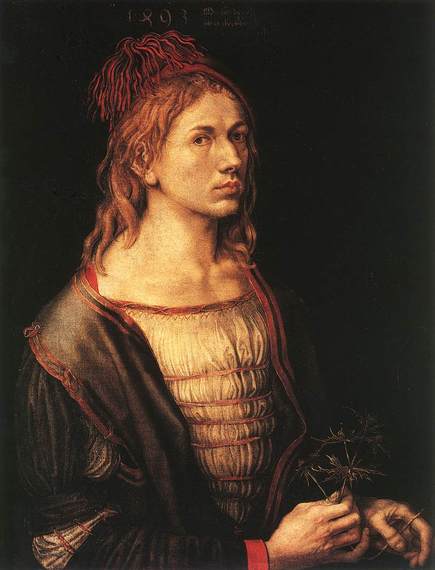
Dürer self-portrait
The earliest painted self-portrait, by Albrecht Dürer, 1493; Oil, originally on vellum (Louvre, Paris)
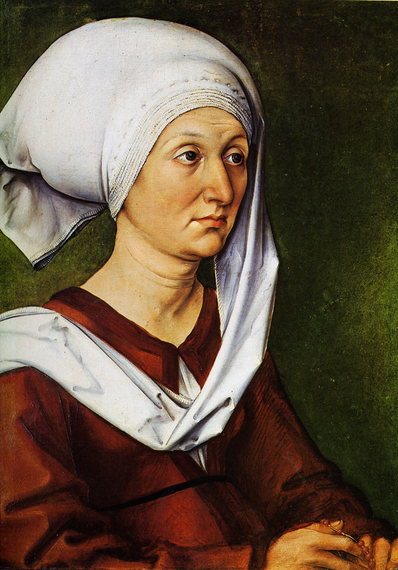
Portrait of Mother
Portrait of Barbara Dürer, née Holper, 1490; Oil on pine panel, 47 cm x 36 cm (Germanisches Nationalmuseum, Nürnberg)

